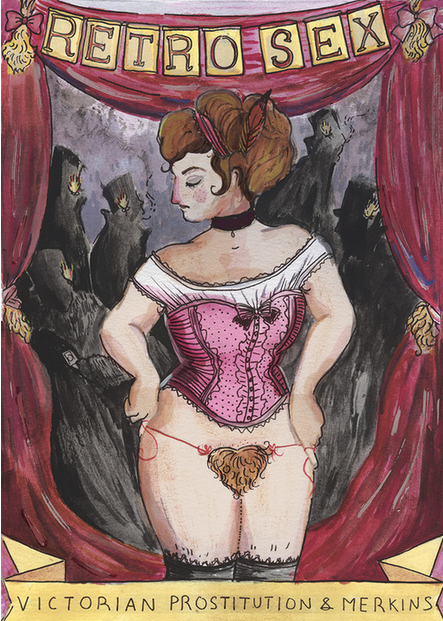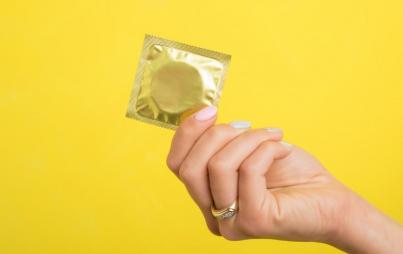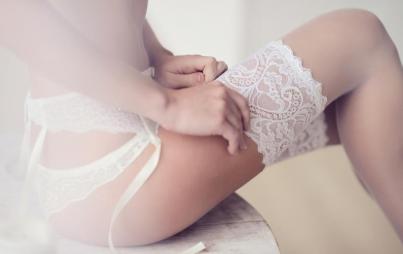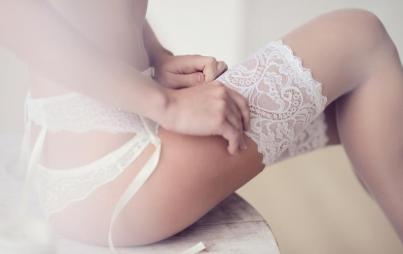
Illustration by Ajah Courts (cargocollective.com/ajahcourts)
Ah, the days of Queen Victoria…the pre-Romantic era romanticized through the lens of modernity, shrouded in its own mystique of a signature culture so different from our own. The most radical contrasts between then and now lies within the realm of beauty ideals and sexuality, namely female sexuality. Rumors about the Victorians' paradoxical prudishness still abound: Society at large condemned masturbation as unhealthy and sinful unless performed by a trained professional, someone who knew how to properly operate a vibrator.
Still, despite publicly stigmatizing female sexuality, the Victorians also secretly reveled in it and regularly produced porn extreme even by today's standards. While I believe in the healing power of orgasms, the Victorians probably would’ve been better off doing the job themselves instead of forcing their genitals into contraptions that would qualify as torture devices today. Embracing DIY masturbation might have rescued them from the perils of turning to one of the most flourishing industries of that day: prostitution, the kind of sex work that flourished outside of a medical office with a dildo-wielding doctor and regularly returned people to it.
Although the media glamorizes Victorian women as though they were animated versions of the sophisticated portraits of their time, the reality was quite different. Most women didn’t resemble the elegant subjects of oil paintings. Women didn’t tend to wear much makeup. Shaving wasn’t much of a part of their beauty norms. If you were a woman, your pubic garden was free to blossom. That is, if you weren’t a sex worker.
Depending on their class, prostitutes were the exception to many social rules during Queen Victoria’s rule. Prostitutes ranged from bourgeoisie courtesans to street walkers. Prostitution was one of the only feminine careers that had the potential to bring quick financial security. Other professions required more elbow grease for meager wages unlikely to rescue them from whatever hardship that life dealt them. The oldest profession could stuff a woman's wallets full of money and grant her rightful entry into pubs. Then again, as “fallen women” (women who had extramarital sex), prostitutes lived on the outskirts of proper society. Beauty ideals were another matter from which they weren’t automatically exempt, although unlike other women, prostitutes wore heavy makeup.
As entrepreneurs, prostitutes had to make their “product” look as appealing as possible. By fulfilling the Victorian standard of beauty, prostitutes stood a greater chance of broadening their customer base. That beauty ideal did not include open sores or pubic lice. It did include pubic hair. Upper-class women might cut off their pubic hair to give to male lovers as a little love charm to decorate a hat like a pubic cockade. Wearing a woman’s pubic hair on your head was a token of a man’s sexual prowess and desirability—and more socially acceptable than visible hickies, for instance. A prostitute, on the other hand, would shave that hair away to keep the crabs at bay. It turns out that sores and other visible symptoms of STDs were not only unhealthy, but also bad for business.
That’s where the merkin came to the rescue. With this clever carpet installment, a prostitute could go about her business and support herself, proliferating her infection by proxy.
Unfortunately, the widespread Victorian belief that sleeping with a child virgin could cure STDs led to the sexual trafficking of children. Pimps of all kinds sold child prostitutes at a higher price, often under their presumed “curative” properties; one sordid report cites that a 13 year-old girl was sold for the equivalent of $897.92 due to a widespread belief that sleeping with a virgin could cure STDs. Holding tremendous sway over the popular opinion, the press began exposing the realities of the “actual pilgrimage into [the] real hell” that is child trafficking. The media bolstered enough support to (after repeated attempts) raise the age of consent from 12 to 13 years of age, and then finally to 16 years of age. It’s not the merkin that’s evil, it’s how you use it. I’m sure that prostitutes didn’t merkin-up with the intention of perpetuating disease. They just wanted to make a decent living and evade the many dangers that accompanied the profession.
Merkins are still used today to keep an actor’s nether-region “private” while giving the illusion of nudity. Back when only men were permitted to perform on stage, they also wore merkins when portraying female characters. In a time where barren genital skin happens to be all the rage, it’s interesting to see that merkins haven’t become entirely extinct yet. Come to think of it, you’ve probably seen way more merkins than you’d like to believe…I guess you were had.







